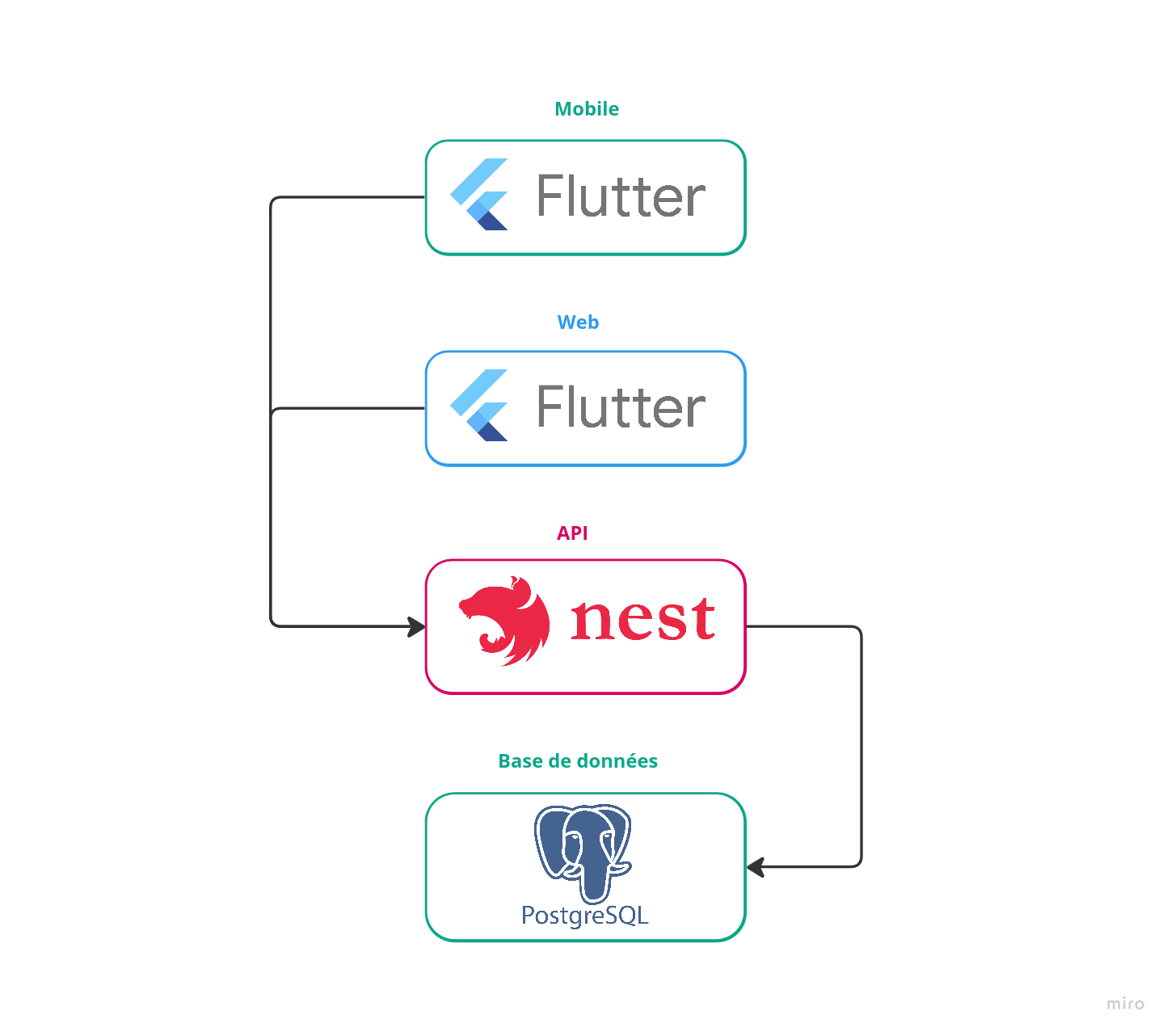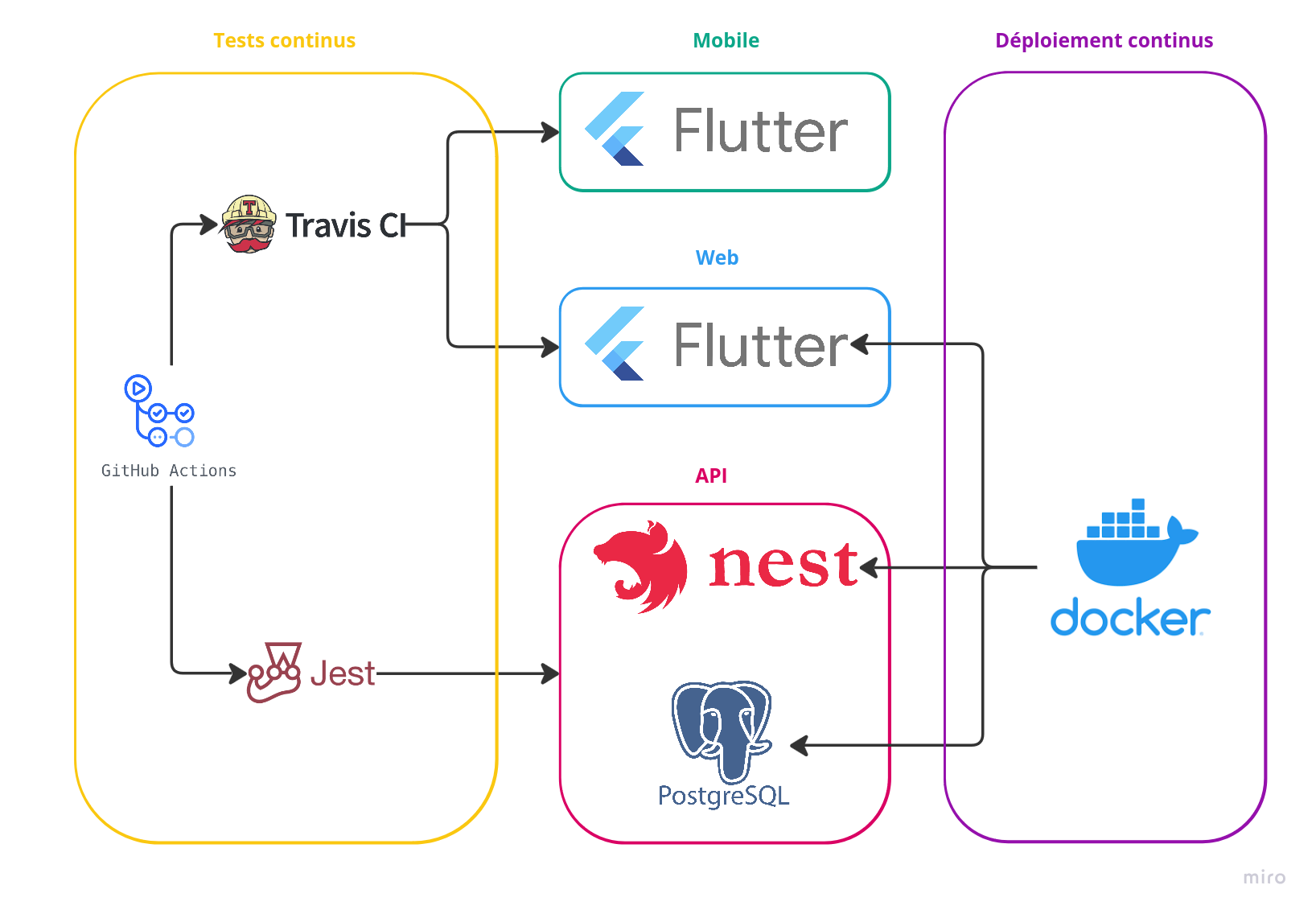Developer documentation
Welcome to the developer documentation of the Junqo-platform.
This documentation is intended for developers who want to contribute to the project.
If you are a new contributor, you should start by reading the getting started section.
If you need some precise information, see the following sections :
Table of contents
Getting started
Before you begin
Before you begin, you should have a basic understanding of the following:
- Take a look at the contributing guidelines to understand how to contribute to the project.
- Take a look at the code of conduct to understand how to behave in the project.
- Take a look at the project structure to understand how the project is organized.
Prerequisites
- Git
- Docker (v20.10.7 or higher)
- Docker Compose (v1.29.2 or higher)
Installation
-
Clone the repository
git clone git@github.com:Junqo-org/junqo-platform.git -
Move to the project directory
cd junqo-platform -
Deploy the project locally using Docker Compose
docker compose up --build
Usage
Notice, the following instructions are admitting that you are using the default configuration of the project.
Furthermore, the project is running in production mode.
You should replace localhost by the IP address of the machine running the project.
- Access the web server at http://localhost:80 or https://localhost:443 if using TLS.
- Access the back server at http://localhost:4200.
- Access the API documentation at http://localhost:4200/api/v1.
- Access the database adminer at http://localhost:3000.
Learn more
Notice, the following sections are admitting that you are using the default configuration of the project.
Project structure
The project is structured as follows:
├── /junqo_back
│ ├── dockerfile.prod
│ ├── dockerfile.dev
│ ├── /src
│ ├── main.ts
├── /junqo_front
│ ├── dockerfile.prod
│ ├── dockerfile.dev
│ ├── /lib
│ ├── main.dart
├── /docs
│ ├── developer_documentation/
│ ├── user_documentation/
│ ├── index.md
├── docker-compose.yaml
├── docker-compose.dev.yaml
Project structure diagram
back: Runs the REST API server to communicate with the database.front: Runs the web server / Flutter app seen by the user.docs: Contains the documentation of the project.docker-compose.yaml: The main file to deploy the project in production mode.docker-compose.dev.yaml: The main file to deploy the project in development mode.
Interactions
The following diagram shows the interactions between the different parts of the project:

Interactions diagram
The front communicates with the back using the REST API.
The back communicates with the database using the database driver.
The database stores the data.
Operation
The following diagram shows how the different programs are executed:

Operational diagram
Networking
The following diagram shows the networking of the project:
External ports: 80/443 4200 5432 3000
| | | |
+-----------+ +----------+ +------------+ +-----------+
| Front | | Back | | DataBase | | Adminer |
+-----------+ +----------+ +------------+ +-----------+
---
title: Networking
---
flowchart BT
%% External ports
A("**Front**") --> P1;
B("**Back**") --> P2;
C("**Database**") --> P3;
D("**Adminer**
(*development only*)") --> P4;
P1[[80/443]];
P2[[4200]];
P3[[5432]];
P4[[3000]];
linkStyle 0,1,2,3 stroke-dasharray: 4 3
Networking diagram
The front is accessible on the World Wide Web at port 80/443. The back is accessible on the World Wide Web at port 4200. The database is accessible on the World Wide Web at port 5432 (admitting that you are using Postgresql). The adminer is accessible on the World Wide Web at port 3000.
API
The backend API communicate with the frontend.
Yous can find the API documentation at http://prod.junqo.fr:4200/api/v1.
Sequence Diagram
The following diagram shows the sequence of the project:
User SignUp
sequenceDiagram
participant U as User
participant LS as Register Screen
participant FAS as Frontend AuthService
participant GC as Validation and Transformation
participant AR as AuthController (Backend)
participant BAS as Backend AuthService
participant DB as Database
U->>LS: Enter credentials
LS->>FAS: Call signUp(type, name, email, password)
FAS->>GC: Send signUp request
GC->>AR: Relay signUp request
AR->>BAS: Invoke signUp method
BAS->>DB: Create user record
DB-->>BAS: Return user data/error
BAS-->>AR: Return AuthPayload or error
AR-->>GC: Return response
GC-->>FAS: Deliver auth result
FAS-->>LS: Return token and user details
User SignIn
sequenceDiagram
participant U as User
participant LS as Login Screen
participant FAS as Frontend AuthService
participant GC as Validation and Transformation
participant AR as AuthController (Backend)
participant BAS as Backend AuthService
participant DB as Database
U->>LS: Enter credentials
LS->>FAS: Call signIn(email, password)
FAS->>GC: Send signIn request
GC->>AR: Relay signIn request
AR->>BAS: Invoke signIn method
BAS->>DB: Query user record by email
DB-->>BAS: Return user data/error
BAS-->>AR: Return AuthPayload or error
AR-->>GC: Return response
GC-->>FAS: Deliver auth result
FAS-->>LS: Return token and user details
User login status check
sequenceDiagram
participant U as User
participant FE as Frontend Component
participant FAS as Frontend AuthService
participant GC as Validation and Transformation
participant AR as AuthResolver (Backend)
U->>FE: Request login status check
FE->>FAS: Call isLoggedIn()
FAS->>GC: Send isLoggedIn request
GC->>AR: Request login status
AR-->>GC: Return true
GC-->>FAS: Deliver status
FAS-->>FE: Confirm logged in state
CI/CD
For the continuous integration and continuous deployment, the project uses Github Actions and Docker Compose. The CI/CD pipeline is defined in the .github/workflows directory.
You can find the CI/CD documentation at here.
Technologies
The project uses the following technologies:
- Overall
- Documentation
- CI/CD
- Frontend
- Backend
- Operations